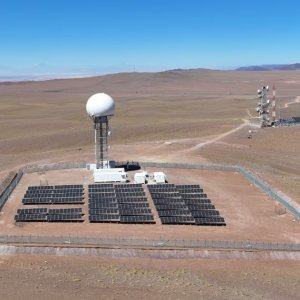
Thermal Runaways Risk System's Long-Term Output
 By María José Goytia | Journalist and Industry Analyst -
Tue, 07/26/2022 - 09:30
By María José Goytia | Journalist and Industry Analyst -
Tue, 07/26/2022 - 09:30
The photovoltaic industry is constantly evolving, employing technology that drives improvements in module efficiency. Recently, strong competition has pushed the development of PV panels able to manage higher electric currents. Despite the benefits for power, however, increased currents create risks related to module reliability that could damage a power plant’s operations, countering the initial advantages. As such, reasonable parameters must be considered in module designs, incorporating current efficiency and panel safety.
Overheating is among the main risks from high voltages. For instance, when the electric current of a module reaches between 18A and 20A, it could create a safety hazard. In extreme cases, this could result in damage to the junction box, back sheets and other materials. In the worst-case scenario, a fire could break out, potentially causing substantial losses for the plant.
In an effort to obtain an optimal balance between efficiency and safety, LONGi carried out a test comparing its bifacial Hi-MO 5 solar modules series, which has a lower front-side short-circuit current value of 13.9A, to a unit with a current of 18.5A. LONGi’s test results indicated that lower voltages provide additional benefits over time, therefore, producing long-term product stability. By lowering module temperatures and associated temperature swings, operational output and safety rise, given that higher currents increase the chance of fires from thermal runaways, resulting in higher potential risks and losses.
Hotspots tend to occur when modules are shaded outdoors. Hotspots are created by fallen leaves, dust and bird droppings on the surface of the module, trees and buildings covering the module. The hotspot disappears when the cover is removed. Thermal runaway of the diode may occur at this time.
“When the hotspot occurs, the diode conducts forward and the diode temperature rises; when the covering is removed, the diode changes from forward conducting to reverse blocking. Thermal runaway occurs when the diode temperature continues to rise. The diode will break down or fail due to current leakage exceeding limits,” explains Jason Yan, Senior Product Marketing Manager at LONGi.
However, when the shading is removed, the diode becomes a reverse cut-off. During this time, if the reverse heating power is greater than the forward heating power, the thermal balance of the system is destroyed and the temperature will continue to rise.
“Schottky diodes have positive temperature characteristics; that is, the higher the temperature, the greater the reverse leakage current, which further increases the diode temperature. The vicious cycle eventually breaks down the diode and leads to failure. Because the reverse heating power is proportional to the voltage, lower voltage assures increased safety levels against thermal runaway,” says Yan.
The unilateral pursuit of high power can lead to an ultra-high module current. In addition, a large number of cells in a single string can lead to an excessively high voltage corresponding to the module, significantly increasing the risk of thermal runaway.
Since thermal runaway is related to forward current and reverse voltage, LONGI’s controlled variable experiment was aimed at studying the effect of these two factors on thermal runaway. The experiment results demonstrated that under the same forward current, reducing reverse voltage can decrease the risk of diode thermal runaway. Under the same reverse bias voltage, reducing forward current can also diminish this risk.
LONGi’s calculations signal that the forward heating power decreases as the junction temperature rises. Since the diode forward voltage decreases with temperature, the current does not change its Hi-MO 5 solar modules. Consequently, the Hi-MO 5’s cooling power increases with the rise of junction temperature. When the two powers are equal, the system reaches a thermal equilibrium.
When local current leaks occur frequently during prolonged times, they will slowly, and without notice, reduce solar power system output. Higher current panels tend to produce higher temperature hotspots and increased heat buildup. LONGi concludes that the current and voltage of a photovoltaic module needs to be controlled within a reasonable range, otherwise thermal stress on the diode may exceed its junction temperature limit, causing irreversible damage to the module. Reduced voltages improve long-term productivity and safety of the entire solar power system, providing additional benefits to operators throughout the solar module’s life cycle.
LONGi’s Hi-MO 5 provides advantages in terms of design, in addition to a safe margin for module current to prevent thermal runaway: the LONGi Hi-MO 5 uses a 25A junction box. Reasonable current and voltage design allow sufficient safety margins that prevent thermal runaway. Meanwhile, optimizing the cooling capacity of the junction box can also help them become more resistant to thermal runaway.
















